How it works:
Share your skin goals and snap selfies
Your dermatology provider prescribes your formula
Apply nightly for happy, healthy skin
How it works:
How it works:
Share your skin goals and snap selfies
Your dermatology provider prescribes your formula
Apply nightly for happy, healthy skin
How it works:
Sunscreen: your skin's best defender from signs of premature aging
Want to keep your skin looking young and healthy? Sunscreen helps protect you from sun damage that can lead to premature signs of aging.



Wearing sunscreen every day is the best favor you can do for your future self. Not only is protecting your skin from the sun key to helping to fade post-acne marks, but it’s also one of the best ways to save your skin from signs of premature aging, like fine lines and wrinkles, rough texture, dark spots—and skin cancer, of course!
You probably hear all the time that you should wear sunscreen—and for good reason. Excessive sun exposure can have some real nasty effects on your skin.¹ Need more convincing? We rounded up some photos to show you just how impactful the sun’s rays can be.
1. What you can’t see can hurt you

UV portraits by the photographer Cara Phillips.
Looks can be deceiving: It took a special ultraviolet camera to reveal the sun-induced aging accumulated on the faces of the people in these photos. Even if you don’t see dark spots or wrinkles today, the sun damage may still be there.
2. The truck driver

Originally published in the New England Journal of Medicine.
Like a simultaneous before-and-after, this photo shows the effects of unprotected sun exposure on just the left side of this truck driver’s face from years in the driver’s seat.² That’s why it’s so important to wear sunscreen, even if the sun’s not out—UV rays can still filter through clouds, and there may be a lot of sunlight shining on us on days we don’t usually think about.³
3. The twin study
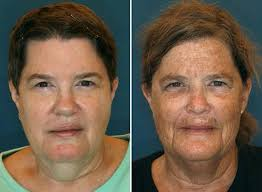
One study focused on two twins with a significant difference in the amount of sun exposure they received over their lifetime. The twin on the right had about 10 more hours per week of sun exposure than the twin on the left.⁴
4. Natural protection isn’t 100%!
Although genetically melanin-rich skin (aka darker skin tones) has natural protection from the sun, it’s not 100%. It’s been estimated that approximately 17% of UVA rays still penetrate melanin-rich skin.⁵ While skin with more melanin may not sunburn or show signs of photoaging as easily, it’s still important to protect it, so keep your sunscreen handy!
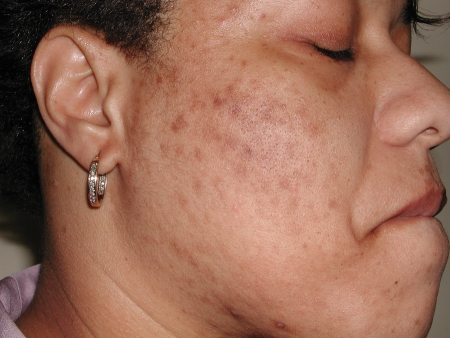
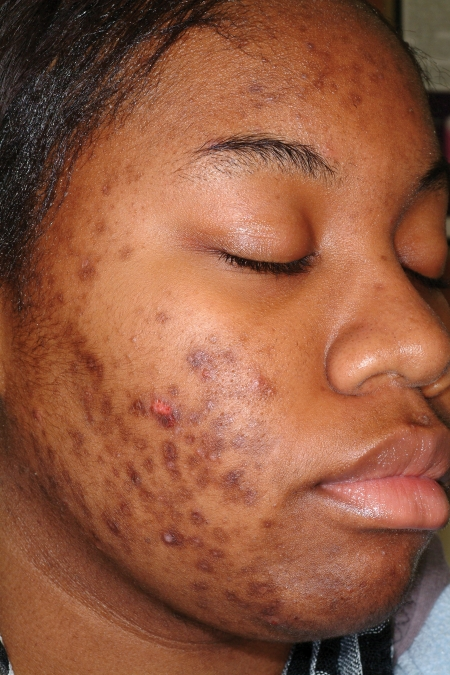
5. A lifetime of damage
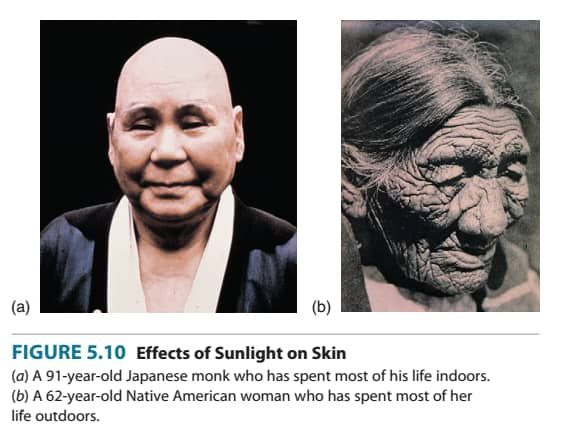

And it’s not just aesthetic signs of aging (like wrinkles) that we need to think about. The American Academy of Dermatology recommends regularly and consistently applying sunscreen to reduce the risk of skin cancers⁶ (like melanoma).
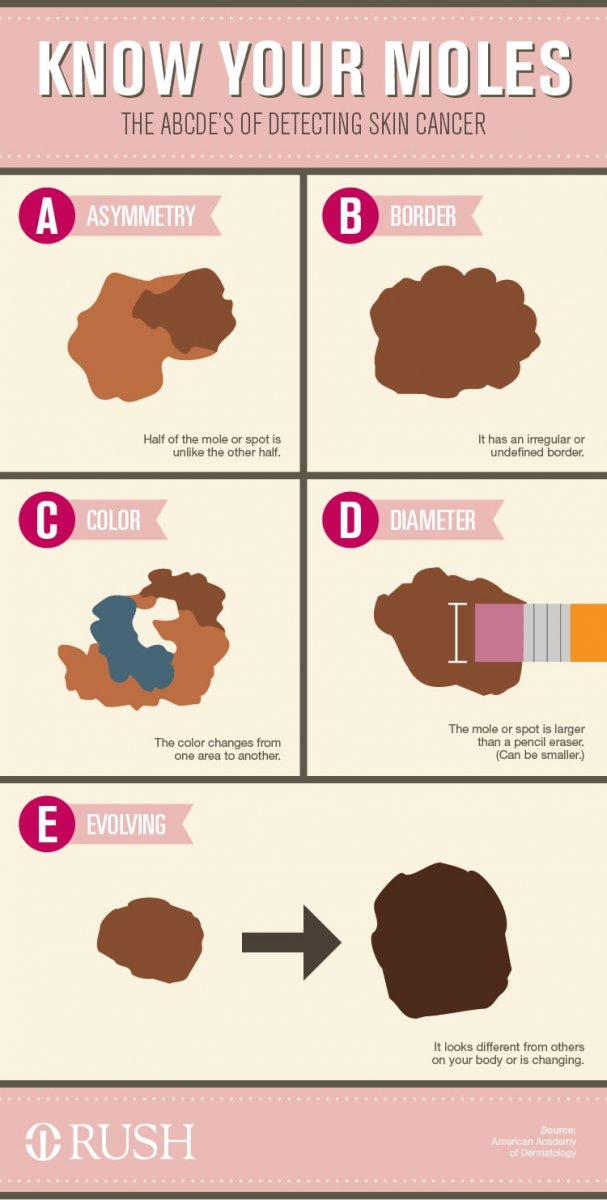
If you have any concerns about a changing mole, please see an in-person dermatologist as soon as possible. Curology doesn’t evaluate or treat skin cancer.
What are ultraviolet rays, and how do they damage skin?
Ultraviolet rays (UV rays) are non-ionizing radiation.There are three types of UV radiation, but only two of them are known to cause damage to our skin: ultraviolet A (UVA) and ultraviolet B (UVB). We know it can get confusing between the two, but the key distinction here is the length of the wave. UVA is longer and mainly associated with skin aging, while UVB is shorter and mainly associated with skin burning. They have different effects on our skin, but both can damage our skin cells.⁷
Long-term exposure to the sun’s rays can increase your risk of developing skin cancer, including melanoma, the most severe form.¹
Reasons you should wear sunscreen every day
Sunscreen isn’t just for the summer months; your skin can be exposed to UV rays even when the sky is overcast.*
Minimize exposure to UV rays that could put you at risk for skin cancer. Spending time in the sun can feel great, but you increase your risk of skin cancer by not adding sunscreen to your daily routine. As a safer way to achieve a sunkissed glow, consider opting for a sunless tanner.
Say goodbye to sunburns. Sunburns are painful and itchy, but thankfully, you can often save yourself the discomfort with a good sunblock.
Help prevent early signs of aging. Sun damage has been shown to speed up signs of aging, including fine lines and age spots. While there are treatments to help improve damage from the sun,⁸ it can be difficult to make the signs of UV exposure fade. Damage from the sun’s rays builds up over time, so you’ll want to protect your skin daily—not just when you’re going to the beach.
Keep your skin moisturized. A sunburn—or even just too much sun exposure—can dry out your skin,⁹ so help your moisturizer do its work by slathering SPF on top of it.
Enjoy the sun. Spending time outside is super relaxing, and it can feel good to get some sun on your skin. If you wear sunscreen every day (and reapply often!), you can stress less about your time outside. That said, it’s important to practice other sun safe behaviors even while wearing sunscreen!
UV rays can cause damage even on a cloudy day. Sunscreen isn’t just for summer. Like we said, UV rays can reach your skin in all types of weather—so it’s important to wear sunscreen year-round.
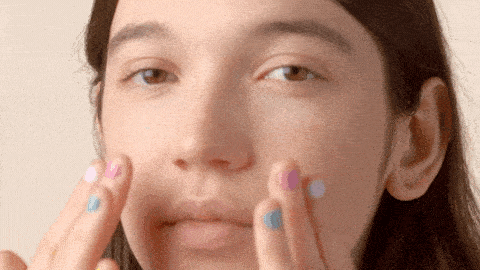
How to use sunscreen
Find a broad spectrum sunscreen with SPF 30+. Some products like moisturizer or foundation may come with built-in SPF 15, but it’s not enough. For good coverage, make sure your sunscreen has SPF 30 or higher.¹⁰
Apply SPF thoroughly and allow time to absorb. In general, give the sunscreen about 15-20 minutes to form a protective “shield” on your skin before heading outdoors.
Reapply, reapply, reapply. Sunscreen doesn’t last forever. You should reapply your sunscreen throughout the day—ideally every two hours, according to the American Academy of Dermatology,¹¹ Interested in a swim? In general, you should apply your sunscreen 15-20 minutes before you dive in, and reapply once you’re out of the water. To be safe, always follow the application directions on the label.
If you happen to get a sunburn (it happens to the best of us!), wear protective clothing to cover the burn while it heals.
Physical vs. chemical sunscreens
There are two types of sunscreens you can choose from: physical or chemical. Physical sunblock acts as a shield, and chemical acts like a sponge.
Physical sunscreen, also called mineral sunscreen, is just as it sounds; it acts as a physical shield that reflects the UVA and UVB rays that can damage your skin. This type of sunscreen is made with titanium dioxide and/or zinc oxide,¹² and they may feel thicker and have a greasy consistency. They help stop the sun's rays from reaching your skin.
Chemical sunscreen, on the other hand, works to absorb the sun’s UV rays before they can reach the skin. Chemical sunscreen typically doesn’t leave a white cast and often has a lighter consistency, but it may be irritating for some people. Think of chemical sunscreen as a sponge that absorbs the harmful rays, so they can’t reach your skin.¹³
Need help choosing a sunscreen for your face?
Don’t miss our sunscreen guide for everything you need to know about SPF, including what products tend to work best for each skin type. If you need some sunscreen recommendations, we have you covered! Here are a few of our favorites:
Broad-spectrum SPF 30 designed by dermatologists for acne-prone skin
Mineral formula with zinc oxide 9.4%
Invisibly melts into every skin tone (no white cast!)
MDSolarSciences Mineral Tinted Creme SPF 30
Natural light tint and matte finish
Primer formula wears well underneath makeup
Suitable for all skin types
Olay Complete Lotion Moisturizer with SPF 30, Sensitive
Gentle and lightweight; features vitamin E and aloe, plus SPF 30
Combination of physical and chemical sunscreen (zinc oxide 7%, octinoxate 7.5%, octisalate 2.5%, octocrylene 2.5%)
Long-lasting hydration without irritating
Drunk Elephant Umbra Tinte™ Physical Daily Defense Broad Spectrum Sunscreen SPF 30
Ultra-gentle
Lightly hydrating
Subtle tint for light-to-medium skin tones (unfortunately, this doesn’t come in different color options)
FAQs
Ultraviolet rays (UV rays) are non-ionizing radiation.There are three types of UV radiation, but only two of them are known to cause damage to our skin: ultraviolet A (UVA) and ultraviolet B (UVB). The key distinction here is the length of the wave. UVA is longer and mainly associated with skin aging, while UVB is shorter and mainly associated with skin burning.

Love the skin you’re in (and let it show!)
You’ve got a long life to live in your skin—and it can be difficult (not to mention expensive) to reverse sun damage. Slather on the SPF now and look forward to the many decades of smooth, healthy skin to come. There’s no way to completely reverse sun damage, but there are things you can do to improve signs of aging brought on by sun exposure. Tretinoin, for example, can lighten dark spots and soften the appearance of fine lines.¹⁴ You can access tretinoin (if it’s right for you) as well as other age-defying ingredients with a Curology subscription. Sign up for a free month of Curology today!*
Get your personalized skincare routine with Curology
Get your personalized skincare routine with Curology


If you need help finding a local, in-person dermatologist, ask your primary care physician or other local healthcare providers for a recommendation, or visit the American Academy of Dermatology site.
P.S. We did the research so you don’t have to:
Centers for Disease Control and Prevention, UV Radiation. (2021).
Jennifer R.S. et al. Unilateral Dermatoheliosis. New England Journal of Medicine. (2012, April 19).
Andersen, P.A. et al. Environmental cues to UV radiation and personal sun protection in outdoor winter recreation. Archives of Dermatology. (November 2010).
Farkas J.P., et al. The Science and Theory behind Facial Aging. Plastic and Reconstructive Surgery —
Global Open. (2013, May 7).
Brenner, M. and Hearing, V. J. The protective role of melanin against UV damage in human skin. Photochemistry and photobiology. (2008, May 1).
American Academy of Dermatology. How to Apply Sunscreen. (n.d.)
John D'Orazio 1, Stuart Jarrett, Alexandra Amaro-Ortiz, Timothy Scott. UV radiation and the skin. International journal of molecular sciences. (2013).
Rabe, J. H., et al. Photoaging: mechanisms and repair. Journal of the American Academy of Dermatology. (2006).
Mayo Clinic Staff. Sunburn. (2020 July 17).
Chen T. A case for SPF-30 p
lus sunscreens for immediate and long-term protection from sun damage. Journal of the American Academy of Dermatology. (2001 February 1 ).
American Academy of Dermatology. How to Apply Sunscreen. (n.d.).
American Academy of Dermatology. Sunscreen FAQs. (n.d.).
American Academy of Dermatology. Sunscreen FAQs. (n.d.).
Baldwin H. E., et al. 40 Years of Topical Tretinoin Use In Review Journal of Drugs in Dermatology. (June 2013).
This article was originally published on February 22, 2018 and updated on April 14, 2022. *Sunscreen cannot prevent all harm from UV rays.
*Cancel anytime. Subject to consultation. Subscription is required. Trial is 30 days + $4.95 shipping and handling.

Curology Team

Nicole Hangsterfer, PA-C
Related Articles
Men skin care: top concernsFace sunscreen for sensitive skinSunscreen for eyes: How to protect your delicate skin from UV raysWrinkles and other signs you’re doing it rightWhat should your underarm care routine look like?Popular Articles
Ask Curology: Is my cold breaking me out?Slugging: The dermatologist-approved skincare hack going viral on TikTokTretinoin vs retinol: What’s the difference?How to create a self-care routine that actually sticksYour 2023 skincare horoscopeTry prescription skincare
Get routine essentials

Good skin days ahead
- Breakouts
- Redness
- Fine lines
- Dark spots
- Hair thinning